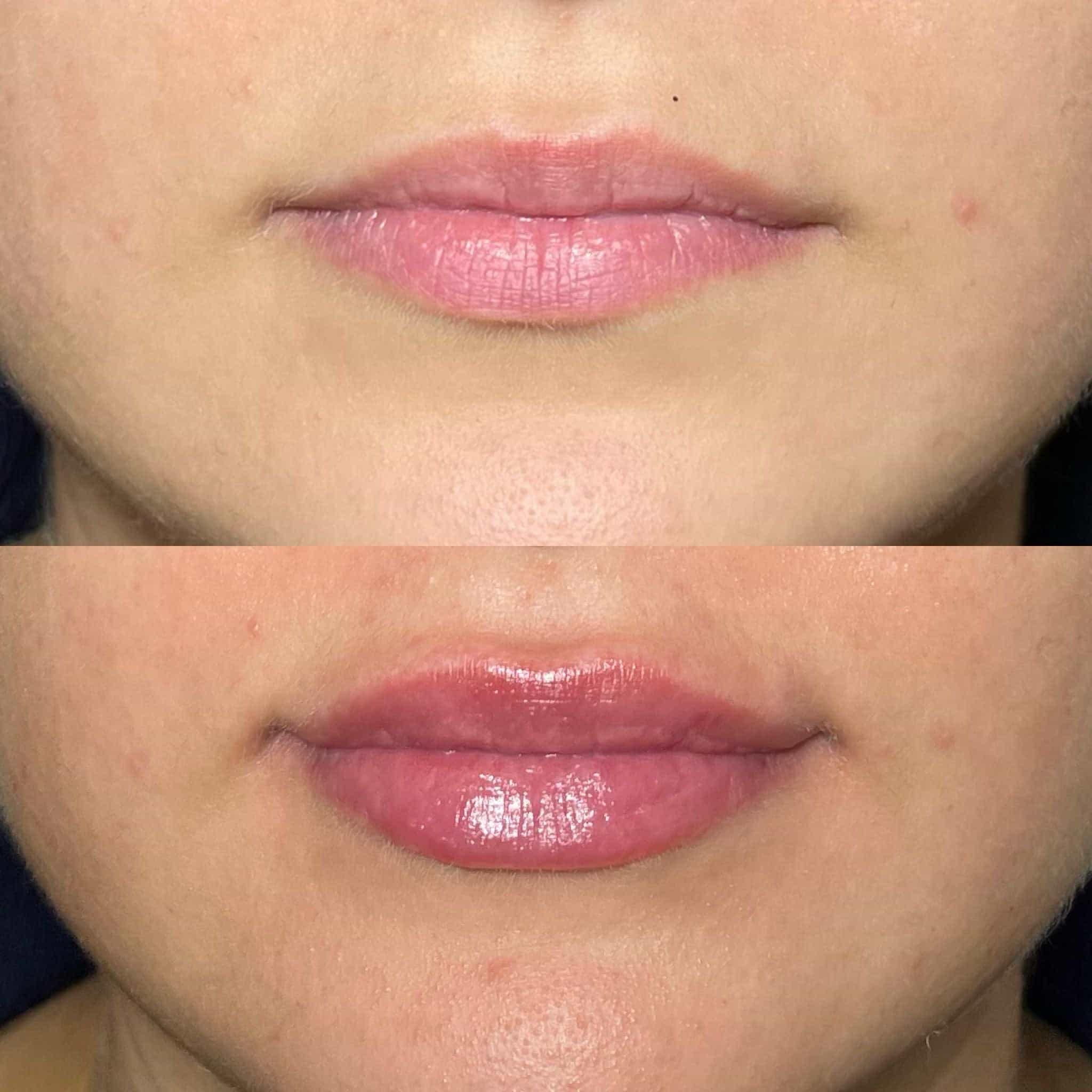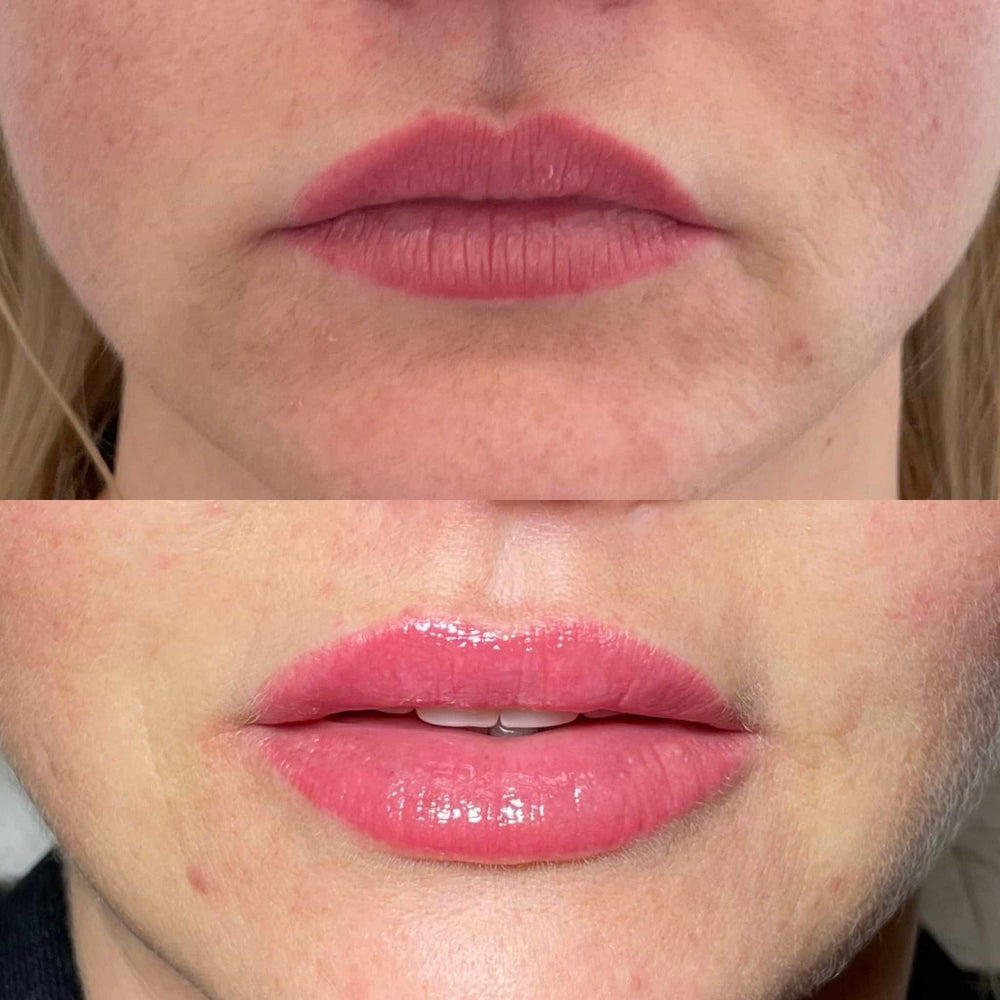Are Tear Troughs Attractive?
Get Your Dermal Filler Consultation with Dr. Laura Geige Today
The Anatomy of Attraction
Subjective Beauty Standards
The perception of physical attractiveness is a complex interplay of biological predispositions, cultural influences, and personal experiences. What one person finds appealing, another may not. This subjectivity is particularly evident when considering features like tear troughs—the depressions under the eyes that can become more pronounced with age.
From an evolutionary perspective, certain features might be associated with health and fertility, influencing our perception of attractiveness. Youthful, smooth skin, for example, often signifies good health and genetic vitality. Tear troughs, on the other hand, are a natural sign of aging. They indicate years of facial expressions, laughter, and tears—experiences that contribute to our individual stories.
However, societal beauty standards heavily influence our judgments of attractiveness. In many cultures, youthful appearances are highly valued, leading to a preference for smooth skin and minimal wrinkles. Tear troughs, as a prominent feature of aging, can be perceived negatively in this context. The media often portrays flawless faces, further reinforcing these standards.
Despite these cultural influences, individual preferences play a significant role in attractiveness perception. Some people may find the slight hollowness under the eyes due to tear troughs attractive, associating it with wisdom, depth, or even a sense of mystery. Others might associate them with tiredness or illness, leading to a less favorable impression.
It’s important to remember that beauty is multifaceted and subjective. While tear troughs can be associated with aging, they are also a natural part of life and a testament to experiences lived. Our appreciation for beauty should encompass the full spectrum of human features and acknowledge the diverse standards that exist across cultures and individuals.
Youthful Appearance and Tear Troughs
Attraction is a complex phenomenon influenced by a multitude of factors, both biological and cultural. When it comes to facial features, youthful appearance is often perceived as attractive.
Tear troughs are the indentations under the eyes, becoming more pronounced with age due to fat loss, bone structure changes, and skin thinning.
Here’s a breakdown of how tear troughs fit into the larger picture of attraction:
-
Youthful Appearance as an Indicator of Health and Fertility: Evolutionary psychology suggests that we are drawn to features that signal youthfulness, health, and fertility. A smooth, plump under-eye area is associated with these qualities.
-
Symmetry and Proportion: Facial symmetry is widely considered attractive as it can indicate good genes and overall health. Tear troughs, when prominent, can disrupt facial symmetry and detract from the perceived harmony of features.
-
Light Reflection and Shadows: Tear troughs create shadows under the eyes, which can make a person look tired, aged, and less attractive. A smooth under-eye area allows for better light reflection, creating a brighter, more youthful appearance.
However, it’s important to remember that beauty is subjective and cultural influences play a significant role in shaping perceptions of attractiveness.
What is considered attractive in one culture may not be in another. While tear troughs can detract from youthful appearance for some, others may find them appealing or even see them as a sign of experience and maturity.
Cultural Perceptions
Reserve Your Dermal Filler Consultation with Dr. Laura Geige at It’s Me and You Clinic
Historical Context and Beauty Ideals
Cultural perceptions of beauty are deeply intertwined with historical context, constantly evolving and shaped by societal norms, trends, and power structures.
Historically, ideals of beauty have varied dramatically across cultures and time periods. For example, in ancient Egypt, prominent cheekbones and a youthful appearance were prized, while in Renaissance Italy, women were celebrated for their pale complexions and delicate features.
The Industrial Revolution and the rise of photography in the 19th century further influenced beauty standards, leading to a focus on symmetry, slenderness, and youthfulness. The invention of cosmetics and skincare products also played a significant role in shaping these ideals.
In the 20th century, Hollywood and mass media had a profound impact on global beauty perceptions. Movies and magazines often portrayed an idealized version of beauty, emphasizing thin bodies, flawless skin, and large eyes.
The rise of social media in recent years has intensified the pressure to conform to these beauty standards, creating a culture of comparison and insecurity. However, there is also a growing movement towards body positivity and inclusivity, celebrating diversity and challenging traditional notions of beauty.
Regarding tear troughs specifically, their perceived attractiveness is subjective and influenced by cultural factors. In some cultures, subtle under-eye hollows may be seen as a sign of elegance and sophistication, while in others, they might be associated with fatigue or aging.
It’s important to remember that beauty is multifaceted and personal. What one person finds attractive, another may not. Ultimately, the perception of tear troughs, like any physical feature, is shaped by a complex interplay of cultural norms, individual preferences, and personal experiences.
Modern Media Influence
Cultural perceptions of beauty are deeply ingrained and constantly evolving, shaped by a complex interplay of social norms, historical influences, and individual experiences. What is considered attractive in one culture or era may be viewed differently in another, highlighting the subjective nature of beauty standards.
Modern media plays a powerful role in shaping these perceptions, particularly through its portrayal of idealized images of beauty. Social media platforms, television, film, and advertising often present narrow and unrealistic representations of physical attractiveness, promoting specific body types, facial features, and skin tones as desirable.
The pervasiveness of these carefully curated images can contribute to body image issues, anxiety, and a sense of inadequacy among individuals who do not conform to these standards. Exposure to idealized beauty can lead to social comparison, where people compare themselves to these unrealistic portrayals and feel dissatisfied with their own appearance.
Tear troughs, the indented areas under the eyes, have become a focal point of discussion in recent years as they are often associated with signs of aging or fatigue. While some may find tear troughs attractive due to their perceived vulnerability or femininity, others may view them as a sign of tiredness or lack of youthfulness.
Modern media’s emphasis on smooth and wrinkle-free skin has contributed to the perception that tear troughs are undesirable, leading to an increased demand for cosmetic procedures aimed at reducing their appearance. However, it is important to remember that beauty standards are subjective and constantly changing.
Ultimately, what constitutes attractiveness is a matter of personal preference and cultural context. It is essential to recognize the influence of media on our perceptions of beauty and to cultivate a more inclusive and accepting view of diverse physical features.

Arrange Your Dermal Filler Consultation with Dr. Laura Geige
The Science Behind Perception
Physiological Responses to Facial Features
Perception is a complex process that involves multiple stages, from sensory input to higher-level cognitive processing. Our brains construct our experience of the world based on the information received through our senses, but this construction is not a simple, direct reflection of reality.
Facial features play a crucial role in social interaction and communication. They convey a wealth of information about an individual’s emotional state, personality traits, and social status. This makes them particularly fascinating subjects for scientific study.
Physiological responses to facial features are mediated by a network of brain regions, including the amygdala, fusiform face area (FFA), and orbitofrontal cortex (OFC). These areas process emotional cues, recognize faces, and make judgments about social significance.
Research suggests that certain facial features, such as symmetrical features and averageness, are often perceived as more attractive. This may be because symmetry is associated with good health and genetic fitness, while averageness signals familiarity and trustworthiness.
Tear troughs, the indented hollows beneath the eyes, have been a subject of debate regarding their attractiveness. Some argue that they can make an individual appear tired or aged, while others find them aesthetically pleasing, suggesting vulnerability or emotional depth.
The perception of tear troughs likely depends on a complex interplay of factors, including:
-
Individual preferences and cultural norms
-
The context in which the face is perceived (e.g., smiling or frowning)
-
The presence of other facial features (e.g., prominent cheekbones can accentuate tear troughs)
Future research may shed further light on the neural mechanisms underlying our perceptions of tear troughs and their influence on attractiveness judgments.
The Role of Social Cues and Learning
The perception of attractiveness is a complex phenomenon influenced by a multitude of factors, both biological and cultural.
From a scientific standpoint, our brains process visual information through a series of intricate steps. When we look at someone’s face, our eyes capture light reflecting off its features. This light enters the eye and is focused onto the retina, where photoreceptor cells convert it into electrical signals.
These signals travel along the optic nerve to the brain, specifically to areas like the occipital lobe responsible for visual processing. The brain then analyzes these signals, identifying shapes, patterns, and colors, ultimately constructing a representation of the face we perceive.
However, this visual input alone doesn’t dictate our judgment of attractiveness. Our brains also draw upon vast stores of information acquired through learning and social experiences.
These learned associations influence how we interpret facial features. For instance, certain facial traits might be deemed attractive because they are associated with youth, health, or fertility – qualities that have evolutionary significance in mate selection.
Cultural norms also play a significant role. Different societies may have varying standards of beauty, emphasizing different features or proportions as attractive.
In the case of tear troughs, their perceived attractiveness is likely influenced by a complex interplay of these factors:
-
Biological Factors: Tear troughs are often associated with youthfulness and vitality. They can create the illusion of fullness in the under-eye area, making someone appear more rested and less aged.
-
Social Cues: The media and popular culture often portray individuals with prominent tear troughs as attractive. These images can influence our perceptions and contribute to the idea that tear troughs are a desirable feature.
-
Individual Preferences: Ultimately, attractiveness is subjective and varies greatly from person to person. What one individual finds appealing, another may not.

The perception of tear troughs, therefore, isn’t solely determined by their physical characteristics but is also shaped by our biological predispositions, learned associations, and cultural influences.
The Lady London Emily Patricia Fae Made by Penny My Better Love Pinnacle Wellbeing Media
- Sculptra Surrey – Collagen Stimulation Therapy Near Wallington, Surrey - November 1, 2025
- Redensity 1 Skin Booster Treatments Near Lingfield, Surrey - October 30, 2025
- Polynucleotides Injectables Near West Horsley, Surrey - October 28, 2025
